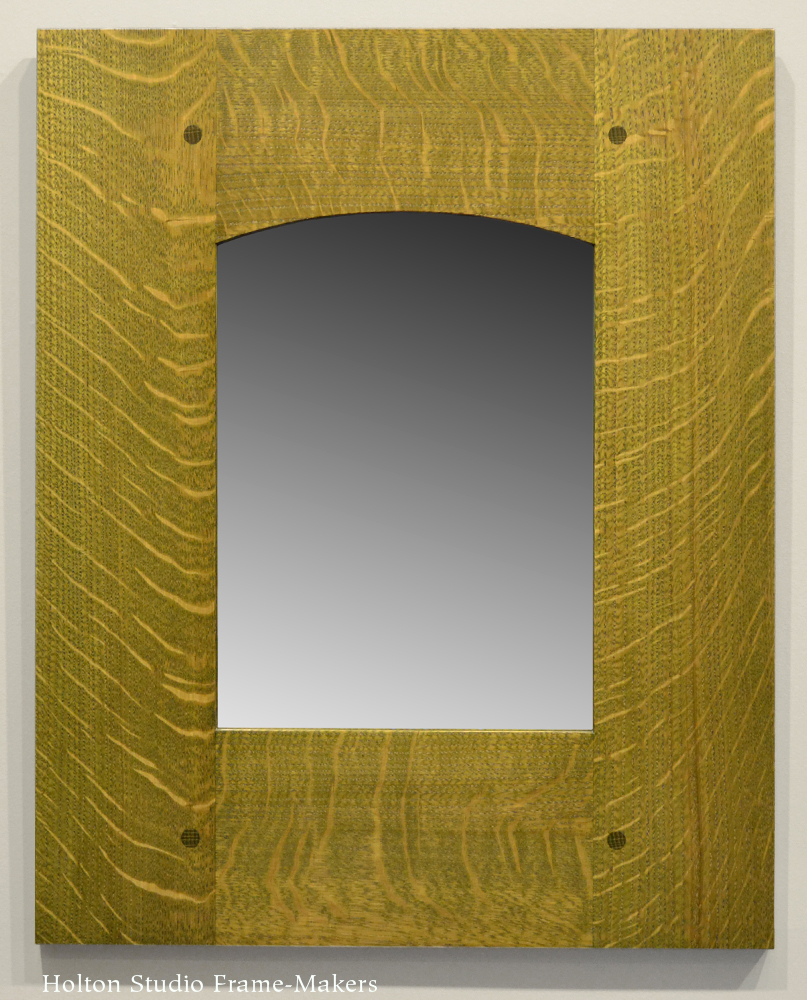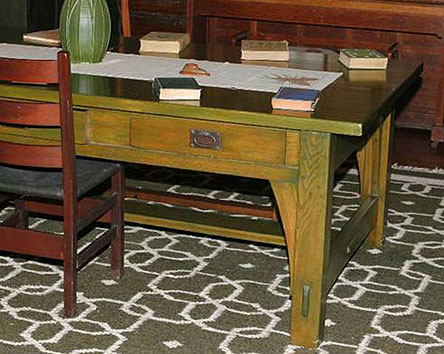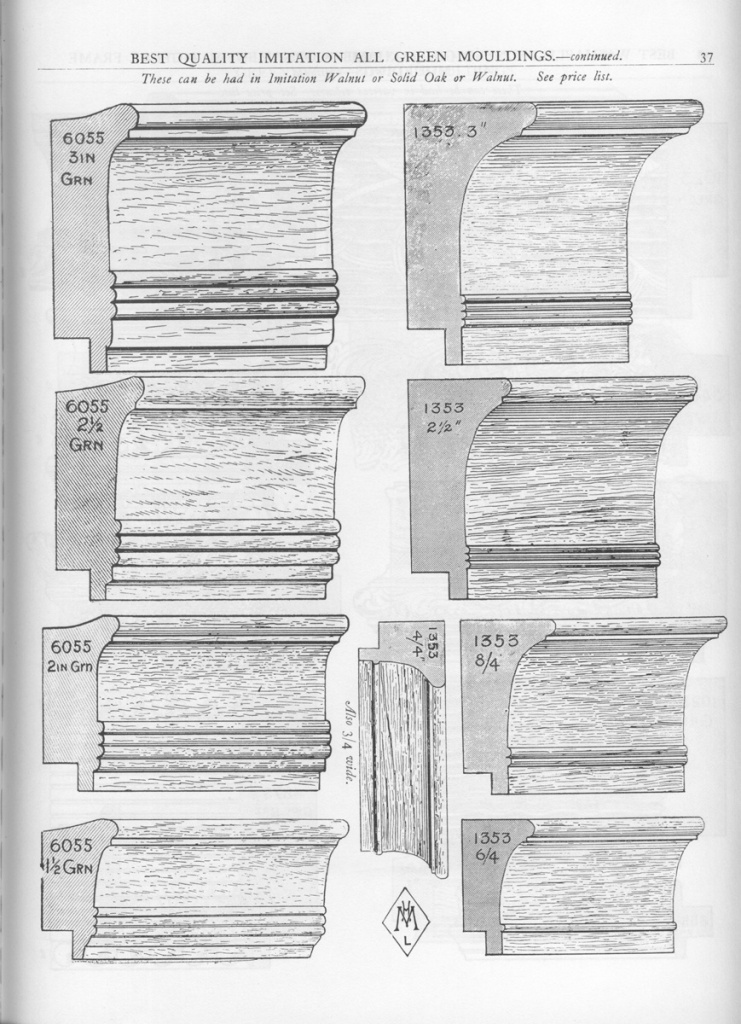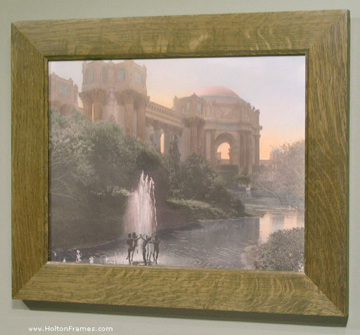We just made a Berkeley Mirror for a customer, and were pleased that she chose the Gustav Green stain. We don’t get a lot of requests for this stain, but it was once very popular. Fascinating how tastes change. In Gustav Stickley’s basic article on his company’s furniture finishes, called “How Craftsman Furniture Is Finished,” the way he treats in general fashion and in one concise paragraph the attainment of certain colors is very telling. After touting his special recipe called “Craftsman Lustre,” he writes,
[W]hen a brown stain is desired, a little asphaltum varnish is added to the Lustre, and when a darker or seal brown is wanted, a small quantity of ultramarine blue is added with the asphaltum varnish. By combining these two tints in different proportions various shades of brown can be obtained. If a green stain is needed, the right amount of green coloring is mixed with the Lustre…

Berkeley Arched Top mirror in quartersawn white oak with Gustav Green stain
Here’s one of the very, very few surviving green finishes on Craftsman or mission oak furniture, most pieces having completely faded or been painted or stripped and refinished.

The library table at Stickley’s Craftsman Farms. A rare surviving example of the popular green stain commonly available on original Craftsman and mission oak furniture. Ray Stubblebine photo, courtesy of Arts and Crafts Homes. (Original here…)
It’s easy enough to see how Stickley thought about, and why he valued, this color. The two main objectives of finishing are first to protect the wood, and second, “attainment of such color and texture as will bring the wood into harmony with its surroundings.” Writing about “Colors Most Appropriate for Woodwork,” Stickley wrote,
[I]t naturally seems best, in coloring wood, to give to it by art such colors, on the whole, as might have been given by Nature. There are many rich browns, for instance, that resemble the colors in the bark of the tree; mellow greenish stains suggest that moss-grown trunk and colors of the foliage, while soft shades of brownish gray recall the hues produced by weathering. Thus the choice is somewhat limited, brown, green and brownish gray, with their different shades and variations, being the only colors that can be appropriately used.
It’s helpful to keep in mind the image of moss in striving for the most harmonious kind of green—a brownish green that blends naturally with other woodwork.
The aim of harmonizing man’s work with nature’s is, of course, at the heart of Arts and Crafts ideals, and brings to mind William Morris’s admiration for a simple medieval Cotswold cottage that seemed to grow out of the land: “’tis in fact beautiful, a work of art and a piece of nature.”
Green Frames
The fact that green was also popular for picture frames is made evident by the 1910 H. Morell wooden moulding catalog, reprinted by Dover Publications, which features no less than 18 pages of mouldings in various greens. One page example is shown below.

Here’s a simple period photo of Bernard Maybeck’s Palace of Fine Arts, framed by us in green oak. (The frame’s our No. 1.3.)
Learn more about our Berkeley mirrors…
« Back to Blog
Daniel WK Chow liked this on Facebook.
Karen O’Mara liked this on Facebook.